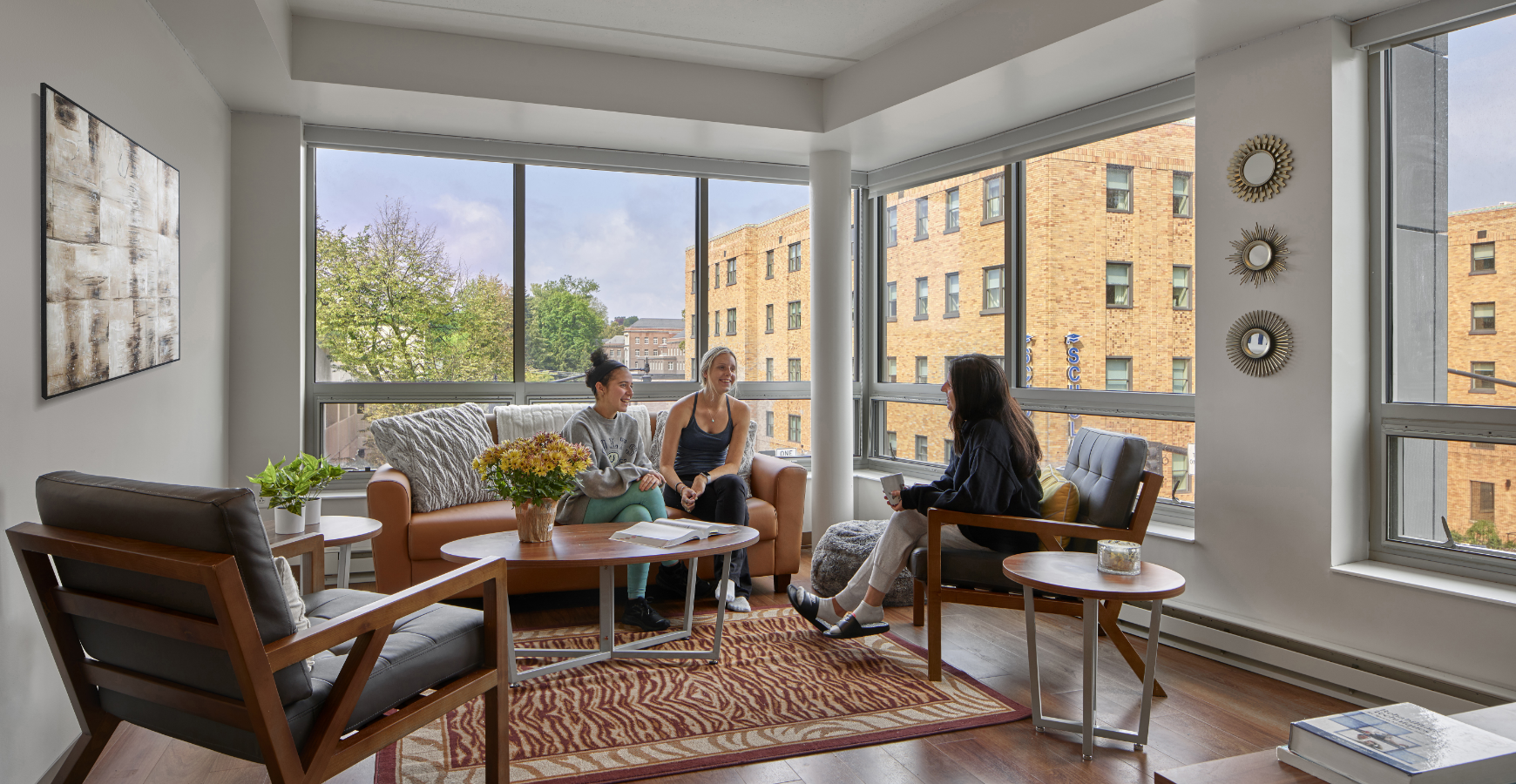|
1 vs. 100 2021 Electrical Code Update
|
In Person
|
Codes and Life Safety
|
1 HSW
|
CD24006
|
Course: 1 vs.100 2021 Electrical Code Update
CEU Credits: 1 HSW
Course #: CD24006
The topic of this class is the 2021 code requirements pertaining to door openings, and the class will be taught in a 1 vs. 100 game show format - with the presenter as the “1” and the attendees as the “100” (AKA “the mob”). Questions are progressively more difficult as the game/presentation continues. Each question is shown, answered by the mob using colored tent cards, and then the correct answer is discussed by the presenter.
Course Objectives:
Upon successful completion of this course participants will be able to:
- Differentiate between fail safe and fail secure electrified hardware
- Learn how the 2021 IBC affects the use of automatic operators on accessible public entrances, including requirements related to touchless switches and stand-by power
- Understand the difference between “special locking arrangements” and “normal locking arrangements”
- Become familiar with recent code change related to electrified hardware, including controlled egress, delayed egress, stairwell reentry, and electromagnetic locks
To register or get more information contact an Allegion Architectural Services Consultant in your area.
Request a Class in Your Area
|
|
1 vs. 100 2021 Mechanical Code Update
|
In Person
|
Codes and Life Safety
|
1 HSW
|
CD24005
|
Course: 1 vs. 100 2021 Mechanical Code Update
CEU Credits: 1 HSW
Course #: CD24005
The topic of this class is the 2021 code requirements pertaining to door openings, and the class will be taught in a 1 vs. 100 game show format - with the presenter as the “1” and the attendees as the “100” (AKA “the mob”). Questions are progressively more difficult as the game/presentation continues. Each question is shown, answered by the mob using colored tent cards, and then the correct answer is discussed by the presenter.
Course Objectives:
Upon successful completion of this course participants will be able to:
- Become familiar with model code changes related to operable hardware such as unlatching motion and operable force
- Learn how the 2021 IBC allows exterior spaces to be locked for security when the egress path passes through the interior of the building
- Understand recent code changes related to fire doors, for example, labeling requirements, terminated stops, and job-site preparations
- Apply the IBC requirements for panic hardware on rooms housing electrical equipment and refrigeration machinery rooms
To register or get more information contact an Allegion Architectural Services Consultant in your area.
Request a Class in Your Area
|
|
1 vs. 100 Accessibility
|
In Person
|
Codes and Life Safety
|
1 HSW
|
CD25003A
|
Course: 1 vs. 100 Accessibility
CEU Credits: 1 HSW
Course #: CD25003A
The topic of this class is accessibility code requirements pertaining to door openings, and the class will be taught in a 1 vs. 100 game show format - with the presenter as the “1” and the attendees as the “100” (AKA “the mob”). Questions are progressively more difficult as the game/presentation continues. Each question is shown, answered by the mob using colored tent cards, and then the correct answer is discussed by the presenter.
Course Objectives:
Upon successful completion of this course participants will be able to:
- Find requirements in the applicable standards – either the 2010 Americans with Disabilities Act guidelines, or ICC A117.1 – Accessible and Usable Buildings and Facilities
- Express the intent of the ADA requirements and where to apply them
- Describe the basic accessibility requirements that apply to door openings, including clear opening width, opening force, closing speed, and operating hardware requirements
- List new requirements such as battery back-up for automatic operators, minimum bottom rail height, and operational force limitations
To register or get more information contact an Allegion Architectural Services Consultant in your area.
Request a Class in Your Area
|
|
1 vs. 100 Decoded Edition
|
In Person
|
Codes and Life Safety
|
1 HSW
|
CD25003B
|
Course: 1 vs. 100 Decoded Edition
CEU Credits: 1 HSW
Course #: CD25003B
The topic of this class is accessibility code requirements pertaining to door openings and the class will be taught in a 1 vs. 100 game show format - with the presenter as the “1” and the attendees as the “100” (AKA “the mob”). Questions are progressively more difficult as the game/presentation continues. Each question is shown, answered by the mob using colored tent cards, and then the correct answer is discussed by the presenter.
Course Objectives:
Upon successful completion of this course participants will be able to:
- Apply the requirements of the Americans with Disabilities Act guidelines and ICC A117.1 standard to door openings in new and existing buildings
- List the basic requirements for fire door assemblies, including the NFPA 80 criteria for annual fire door assembly inspection
- Convey the intent of the door-related egress requirements, including the International Building Code and NFPA 101 – The Life Safety Code
- Identify the sections of the code related to electrified hardware, including delayed egress locks, stairwell reentry, and electromagnetic locks
To register or get more information contact an Allegion Architectural Services Consultant in your area.
Request a Class in Your Area
|
|
1 vs. 100 Electrified Hardware
|
In Person
|
Codes and Life Safety
|
1 HSW
|
CD25003C
|
Course: 1 vs. 100 Electrified Hardware
CEU Credits: 1 HSW
Course #: CD25003C
This course covers code requirements for electrified hardware and how they pertain to and influence opening hardware. The class will be taught in a 1 vs. 100 game show format - with the presenter as the “1” and the attendees as the “100” (AKA “the mob”). Questions are progressively more difficult as the game/presentation continues. Each question is shown, answered by the mob using colored tent cards, and then the correct answer is discussed by the presenter.
Course Objectives:
Upon successful completion of this course participants will be able to:
- Find requirements in the applicable codes and standards – either the International Building Code or NFPA 101 – The Life Safety Code
- Express the intent of the requirements and where to apply them
- Describe the basic requirements that apply to electrified hardware – including fail safe vs. fail secure terminology, and requirements for access control, delayed egress, and stairwell reentry
- List new requirements such as electromagnetic locks, elevator lobby egress, and hospital unit lockdown
To register or get more information contact an Allegion Architectural Services Consultant in your area.
Request a Class in Your Area
|
|
1 vs. 100 Fire and Life Safety
|
In Person
|
Codes and Life Safety
|
1 HSW
|
CD25003D
|
Course: 1 vs. 100 Fire and Life Safety
CEU Credits: 1 HSW
Course #: CD25003D
The topic of this class is fire and life safety code requirements pertaining to door openings, and the class will be taught in a 1 vs. 100 game show format - with the presenter as the “1” and the attendees as the “100” (AKA “the mob”). Questions are progressively more difficult as the game/presentation continues. Each question is shown, answered by the mob using colored tent cards, and then the correct answer is discussed by the presenter.
Course Objectives:
Upon successful completion of this course participants will be able to:
- Find requirements in the applicable codes and standards – either NFPA 80 – Standard for Fire Doors and Other Opening Protectives, the International Building Code, or NFPA 101 – The Life Safety Code
- Express the intent of the requirements and where to apply them
- Describe the basic fire and life safety requirements that apply to door openings - including closing, latching, and clearance requirements for fire doors, and single operation egress
- List new requirements such as fire door inspection, panic hardware occupant loads, impact-resistant glazing, tornado shelters, and smoke gasketing
To register or get more information contact an Allegion Architectural Services Consultant in your area.
Request a Class in Your Area
|
|
ADA Entrance Accessibility
|
In Person
|
Codes and Life Safety
|
1 HSW
|
CDI22009
|
Course: ADA Entrance Accessibility
CEU Credits: 1 HSW
Course #: CDI22009 / CDD22105 (Distance Learning)
This course focuses on accessibility; the ability for occupants of all abilities to enter and move around a building with ease. We will examine hardware options that enable the opening to meet clear width and maneuvering clearances; threshold and latch requirements; opening force and closing speed requirements.
Course Objectives:
Upon successful completion of this course participants should be able to:
- Identify requirements for accessible openings according to the ADA
- State opening dimensions, clear width and maneuvering clearances of accessible openings according to the ADA
- Describe ADA latch requirement and list opening force and closing speeds for auto operated doors
- Specify hardware that will meet accessibility requirements and the owner’s needs
To register or get more information contact an Allegion Architectural Services Consultant in your area.
Request a Class in Your Area
|
|
Code Changes Affecting Classroom Doors
|
In Person
|
Codes and Life Safety
|
1 HSW
|
CDI23002
|
Course: Code Changes Affecting Classroom Doors
CEU Credits: 1 HSW
Course #: CDI23002
The 2018 editions of the International Building Code, International Fire Code, and NFPA 101 – Life Safety Code, all include changes specific to classroom doors. A Tentative Interim Amendment was approved in 2019, which further modifies the 2018 edition of NFPA 101. This course will cover the requirements of the model codes and the ADA Standards for Accessible Design that apply to classroom doors.
Course Objectives:
Upon successful completion of this course participants should be able to:
- List the requirements of the model codes and accessibility standards that apply to classroom doors
- Describe how recent code changes and state legislation impact the types of security devices allowed for classrooms
- Explain the various risks faced by school districts, and the benefits of the all-hazards approach to security
- Suggest options school districts should consider for securing classroom doors and talk about the retrofit security methods that may have unintended consequences
To register or get more information contact an Allegion Architectural Services Consultant in your area.
Request a Class in Your Area
|
|
Code Jeopardy
|
In Person
|
Codes and Life Safety
|
1 HSW
|
CD25001
|
Course: Code Jeopardy
CEU Credits: 1 HSW
Course #: CD25001
One of our most popular programs, this course is delivered in an interactive game format. It discusses ADA requirements, occupancy classification codes, Fire and Life Safety codes and the hardware that can provide for the needs of an owner while also complying with applicable codes.
Course Objectives:
Upon successful completion of this course participants should be able to:
- Identify requirements for accessible openings according to the ADA
- Explain code requirements for means of egress
- Specify opening products that meet fire code requirements
- Discuss code requirements for electrical hardware products
To register or get more information contact an Allegion Architectural Services Consultant in your area.
Request a Class in Your Area
|
|
Code Jeopardy 2
|
In Person
|
Codes and Life Safety
|
1 HSW
|
CDG22008
|
Course: Code Jeopardy 2
CEU Credits: 1 HSW
Course #: CDG22008
This course is delivered in an interactive game format which engages participants in discussion centered on ADA requirements, occupancy classification codes, Fire and Life Safety codes and hardware that can provide for the needs of an owner while also complying with applicable codes.
Course Objectives:
Upon successful completion of this course participants should be able to:
- Identify requirements for accessible openings according to the ADA
- Explain code requirements for means of egress
- Specify opening products that meet fire code requirements
- Discuss code requirements for electrical hardware products
To register or get more information contact an Allegion Architectural Services Consultant in your area.
Request a Class in Your Area
|
|
Codes and Egress
|
In Person
|
Codes and Life Safety
|
1 HSW
|
CDI23004
|
Course: Codes and Egress
CEU Credits: 1 HSW
Course #: CDI23004 / CDD20052 (Distance Learning)
This course focuses on codes that would affect a specifier’s choice of hardware as it applies to egress openings.
Course Objectives:
Upon successful completion of this course participants should be able to:
- Discuss code requirements applicable to openings along the path of egress
- Understand building codes that affect hardware choices for egress doors
- Describe the difference between panic and fire hardware and list needs to consider when specifying these products
- Identify access control products for egress doors that meet code requirements
To register or get more information contact an Allegion Architectural Services Consultant in your area.
Request a Class in Your Area
|
|
Creating a Path to Safety
|
In Person
|
Codes and Life Safety
|
1 HSW
|
CDI22007
|
Course: Creating a Path to Safety
CEU Credits: 1 HSW
Course #: CDI22007 / CDD22104 (Distance Learning)
Getting people out of a building in emergency situations is critical. To help ensure that everyone is protected on the way out, there are specific code requirements for pathways and openings in an exit path. This course will examine the components that make up means of egress and discuss the hardware necessary to meet those code requirements while ensuring ease of building use.
Course Objectives:
Upon successful completion of this course participants should be able to:
- Define and describe exit access, exit, and exit discharge
- List the code requirements that affect hardware choices for each of the three parts of an exit route
- Specify hardware for exit openings that will meet building codes and provide ease of building use
- Discuss the important hardware choices for egress openings and provide examples of when and where each should be used
To register or get more information contact an Allegion Architectural Services Consultant in your area.
Request a Class in Your Area
|
|
Decoded 1 - Codes & Accessibility Requirements
|
In Person
|
Codes and Life Safety
|
1 HSW
|
CDI22018
|
Course: Decoded 1 – Codes and Accessibility Requirements
CEU Credits: 1 HSW
Course #: CDI22018 / CDD20061 (Distance Learning)
This is the first class of a 4-part series. You don’t need to attend all to get CEU credit. It gives an introduction to the codes and standards used by the door and hardware industry, and an overview of the accessibility standards for door openings. Accessibility requirements which impact the selection of doors and hardware include clear opening width, opening force, closing speed, the operation of door hardware, and requirements for automatic doors.
Course Objectives:
Upon successful completion of this course participants should be able to:
- Identify the various codes and standards affecting door openings, and when to reference each one
- Identify which code or standard applies to your project
- Understand the accessibility requirements that apply to door openings, including door size, opening force, closing speed, thresholds, and operable hardware
- Differentiate between the requirements which apply to manual doors vs. the requirements for automatic doors, including the referenced standards
To register or get more information contact an Allegion Architectural Services Consultant in your area.
Request a Class in Your Area
|
|
Decoded 2 - Fire Door Assemblies
|
In Person
|
Codes and Life Safety
|
1 HSW
|
CDI22019
|
Course: Decoded 2 – Fire Door Assemblies
CEU Credits: 1 HSW
Course #: CDI22019 / CDD20068 (Distance Learning)
This is the second class of this 4-part webinar series. You don’t need to attend all to get CEU credit. It covers the requirements of the codes and standards that apply to fire door assemblies, including NFPA 80 – Standard for Fire Doors and Other Opening Protectives.
Course Objectives:
Upon successful completion of this course participants should be able to:
- Discuss the standard for fire door assemblies – NFPA 80, and the sections which apply to swinging doors
- State when and where fire rated assemblies would be used, and describe the purpose of fire doors
- List basic rules for fire doors which ensure that fire doors will be closed and latched if there is a fire, with minimal smoke infiltration
- Review the requirements for annual inspection of fire doors, including inspection criteria and procedures
To register or get more information contact an Allegion Architectural Services Consultant in your area.
Request a Class in Your Area
|
|
Decoded 3 - Egress & Life Safety
|
In Person
|
Codes and Life Safety
|
1 HSW
|
CDI22020
|
Course: Decoded 3 – Egress and Life Safety
CEU Credits: 1 HSW
Course #: CDI22020 / CDD20076 (Distance Learning)
This is the third class of a 4-part series. You don’t need to attend all to get CEU credit. This course addresses the egress requirements of NFPA 101 – The Life Safety Code and the International Building Code. Codes impacting egress door assemblies include the means of unlatching the door to allow egress, clear opening width and opening force, luminous egress path markings, and impact-resistance requirements for glazing.
Course Objectives:
Upon successful completion of this course participants should be able to:
- Identify the occupancy classification or use group for a project and understand how that classification affects code requirements
- Describe basic life safety concepts including the 3 parts of a means of egress, travel distance, common path of travel, area of refuge, clear width, door swing, and dead-end corridors
- Apply the means of egress requirements to door openings, to select the proper locking/latching hardware
- State additional requirements for egress doors, relative to clear width, opening force, and automatic operators
To register or get more information contact an Allegion Architectural Services Consultant in your area.
Request a Class in Your Area
|
|
Decoded 4 - Codes for Electrified Hardware
|
In Person
|
Codes and Life Safety
|
1 HSW
|
CDI22021
|
Course: Decoded 4 – Codes for Electrified Hardware
CEU Credits: 1 HSW
Course #: CCDI22021 / CDD20074 (Distance Learning)
This is the fourth class of a 4-part series. You don’t need to attend all to get CEU credit. This course discusses how to select the appropriate hardware for various door openings and learn about the code requirements for each. The seven basic sets of codes for electrified hardware are discussed: access control/free egress, delayed egress, controlled egress (I-2), elevator lobby egress, electromagnetic locks released by a sensor, electromagnetic locks released by door-mounted hardware, and stairwell reentry.
Course Objectives:
Upon successful completion of this course participants should be able to:
- Describe the concepts of “fail safe” and “fail secure”, which types of electrified hardware are available with each function, and when to specify them
- Properly apply code requirements for fire door assemblies and positive latching to applications with electrified hardware
- Differentiate between the two code sections relative to electromagnetic locks, and which release devices are required for each application
- Identify delayed egress locks and the applications where doors may be locked in the direction of egress for additional security
- Apply the stairwell reentry requirements to doors serving egress stairs, including the various options allowed by NFPA 101 – The Life Safety Code and the International Building Code
To register or get more information contact an Allegion Architectural Services Consultant in your area.
Request a Class in Your Area
|
|
Panic Hardware – When, Where, and Why
|
In Person
|
Codes and Life Safety
|
1 HSW
|
CDI23009
|
Course: Panic Hardware – When, Where, and Why?
CEU Credits: 1 HSW
Course #: CDI23009 / CDW20006 (Distance Learning)
When panic hardware is required by code, there are additional mandates that must be followed regarding the operation of the hardware. Fire doors add yet another layer of requirements for this hardware, and there are also exceptions that apply in some locations. This instructor led course will explain when and where panic hardware is required, why it is used, and what other code requirements and exceptions need to be considered when selecting these devices.
Course Objectives:
Upon successful completion of this course participants should be able to:
- Describe the purpose of panic hardware in facilitating emergency egress
- List the locations where panic hardware is required by the model codes and standards, based on occupancy type and calculated occupant load
- Talk about the code requirements that apply to panic hardware, including requirements for fire doors, touchpad length, operable force, and required listings
- Explain the code requirements for electrified panic hardware options, including delayed egress, controlled egress, and panic hardware used in conjunction with electromagnetic locks
To register or get more information contact an Allegion Architectural Services Consultant in your area.
Request a Class in Your Area
|
|
The Essentials of Fire Door Inspections
|
In Person
|
Codes and Life Safety
|
3 HSW
|
LS23012
|
Course: The Essentials of Fire Door Inspections
CEU Credits: 3 HSW
Course #: LS23012
Do you know that since 2007 annual fire door inspections have been required? This course will provide an introduction of the basic fire door requirements within NFPA 80. Focusing on fire doors and their corresponding fire door hardware, this class will assist participants with understanding the fire door inspection checklist.
Course Objectives:
Upon successful completion of this course participants should be able to:
- Describe the requirements to inspect fire doors as defined by NFPA 80
- Identify what a Fire Door Assembly is, its purpose, the components of a Fire Door Assembly, and the purpose those components serve
- Explain the importance of maintaining and inspecting fire doors
- Using content from NFPA 80, cite the required items the standard says should be verified on swinging fire doors with builder’s hardware
- List some possible ways in which to correct common code violations
To register or get more information contact an Allegion Architectural Services Consultant in your area.
Request a Class in Your Area
|
|
ABC’s of Access Control
|
In Person
|
Access Control
|
1 HSW
|
PEI22013
|
Course: ABC’s of Access Control
CEU Credits: 1 HSW
Course #: PEI22013 / PED22108 (Distance Learning)
Since electronic access control is common even in small facilities, understanding the system components and component options is imperative to specifying the right products for your client’s facility. Access control system can offer a variety of tools and benefits often overlooked. In this course we’ll explore electronic access control; from its benefits to the owner and building occupants, to fire and life safety needs.
Course Objectives:
Upon successful completion of this course participants should be able to:
- Describe the components needed to create access control systems
- List available options for system components
- Provide additional security and access control ideas that your client may not have known or thought about
- Describe options for system set up with typical head end software
To register or get more information contact an Allegion Architectural Services Consultant in your area.
Request a Class in Your Area
|
|
Access Control: Where to Start, What to Ask, How to Design
|
In Person
|
Access Control
|
1 HSW
|
PEI22017
|
Course: Access Control: Meeting Your Client’s Needs
CEU Credits: 1 HSW
Course #: PEI004 / PED20065 (Distance Learning)
This course on electronic access control products that will satisfy codes and meet your clients' needs. We will discuss how to address your clients’ safety concerns through the use of both hard wired and wireless products while still maintaining design needs and code requirements on egress openings.
Course Objectives:
Upon successful completion of this course participants should be able to:
- State the life safety benefits of electronic access control vs. mechanical access control
- List code and client criteria to use when specifying access control products
- Explain common electronic locking functions and how they can be applied to satisfy code and client requirements
- Describe openings where access control is commonly used and hardware options that will best fit the need of that space
To register or get more information contact an Allegion Architectural Services Consultant in your area.
Request a Class in Your Area
|
|
Electrified Hardware Basics
|
In Person
|
Access Control
|
1 HSW
|
PEI23010
|
Course: Electrified Hardware Basics
CEU Credits: 1 HSW
Course #: PEI23010 / PED20059 (Distance Learning)
This course covers the operation, features and functionality of electrified access control products and the correct use and documentation of electrical access control products to meet state code requirements.
Course Objectives:
Upon successful completion of this course participants should be able to:
- Describe hardware components that are used to create a complete electrical circuit
- List the 7 basic code categories for electrified hardware used to control access or egress
- Reference the appropriate code and section for each type of controlled opening
- Create the proper documentation that will provide a code compliant, working opening
To register or get more information contact an Allegion Architectural Services Consultant in your area.
Request a Class in Your Area
|
|
Electrified Hardware Jeopardy
|
In Person
|
Access Control
|
1 HSW
|
PE24002
|
Course: Electrified Hardware Jeopardy
CEU Credits: 1 HSW
Course #: PE24002
Electrified hardware is used every day on openings found in all types of buildings. This fun, interactive course will cover topics pertaining to commonly used electrified hardware products and how they can be specified to meet customer needs while still satisfying code requirements.
Course Objectives:
Upon successful completion of this course participants should be able to:
- Define electrical terms as they apply to electrified hardware
- Specify electrified products that satisfy code requirements and customer needs
- Discuss the difference between a fail safe electrified hardware product and one that is fail secure
- List electronic locking hardware components that are commonly used in access control systems to provide safety and security
To register or get more information contact an Allegion Architectural Services Consultant in your area.
Request a Class in Your Area
|
|
A Lean Operation: Strategies for Creating Space-Efficient and Accessible Interiors with Sliding Door Systems
|
In Person
|
Door and Hardware
|
1 HSW
|
PM24003
|
Course: A Lean Operation: Strategies for Creating Space-Efficient and Accessible Interiors with Sliding Door Systems
CEU Credits: 1 HSW
Course #: PM24003 / PMD21102 (Distance Learning)
From maximizing the existing footprint in retrofits to reducing the spread of infection and supporting the flex needs of the hybrid workspace, this course will cover how interior sliding doors serve as versatile solutions meeting on-the-rise design trends while addressing ongoing space-efficiency and sound attenuation needs. Learn how interior sliding doors can help optimize occupant comfort through the use of daylighting and enhanced acoustic performance. Then, find out how to mitigate the spread of infection through sliding doors systems with touchless technology. Additionally, explore how space saving efficiencies can improve useability, address occupant accessibility challenges and facilitate healthy movement.
Course Objectives:
Upon successful completion of this course participants should be able to:
- Illustrate the role design plays in creating sliding door systems that improve usability and meet modern aesthetic standards
- Gain a better understanding of how interior sliding doors can improve occupant comfort through enhanced acoustic performance and access to daylight
- Understand sliding door’s touchless technology and the role it plays in mitigating the spread of infection while encouraging healthy motion
- Demonstrate the ways in which today’s interior sliding door systems use hardware compliance and space-saving efficiencies to meet the required ADA Standards and improve accessibility
To register or get more information contact an Allegion Architectural Services Consultant in your area.
Request a Class in Your Area
|
|
Automatic Entrance Systems Overview
|
In Person
|
Door and Hardware
|
1 HSW
|
PMI22022
|
Course: Automatic Entrance Systems Overview
CEU Credits: 1 HSW
Course #: PMI22022
This course provides an overview of automatic door systems typically designed, specified, and installed in commercial and industrial applications with a primary focus on the most common applications with swinging and sliding doors.
Course Objectives:
Upon successful completion of this course participants should be able to:
- The function of automatic door systems and components including activation and safety systems
- How to layout automatic entrance systems considering traffic patterns and safety requirements
- The design of automatic entrances including critical coordination issues encountered with other trades
- Code requirements for safety, accessibility, and egress
To register or get more information contact an Allegion Architectural Services Consultant in your area.
Request a Class in Your Area
|
|
Basic Hardware Jeopardy
|
In Person
|
Door and Hardware
|
1 HSW
|
PM24008
|
Course: Basic Hardware Jeopardy
CEU Credits: 1 HSW
Course #: PM24008
Learning doesn’t have to come in the form of a lecture! This course is delivered in a fun interactive game format. It discusses the basic hardware requirements for specifying door hardware along with some of the code requirements that determine what hardware must be specified to comply with building and fire and life safety code.
Course Objectives:
Upon successful completion of this course participants should be able to:
- Describe locking hardware that can be used to secure an opening that will meet the owner’s needs while still complying with codes
- Define “knowing act” switches, when/where they can be used, and list code requirements that pertain to them
- Describe door protection hardware and how code requirements affect your choices
- Specify opening hardware that best fits the use of the opening, while remaining code compliant
To register or get more information contact an Allegion Architectural Services Consultant in your area.
Request a Class in Your Area
|
|
Door Hardware Collaboration – A Consultative Approach
|
In Person
|
Door and Hardware
|
1 HSW
|
SPI22006
|
Course: Door Hardware Collaboration – A Consultative Approach
CEU Credits: 1 HSW
Course #: SPI22006 / SPD22103 (Distance Learning)
Collaborating on Door Hardware doesn’t need to be hard, but it does take time. Our goal is to take the HARD out of Hardware by helping you understand the information a door hardware consultant needs in order to provide a quality door hardware specification. By improving coordination with the related specification sections, you can help avoid problems with door hardware that are often seen during construction.
Join us for a discussion of the steps needed to produce clear and accurate door opening data. We will focus on how to best meet your client’s needs, the importance of keeping these sections updated, and the negative impact of ambiguous designs and poor communication.
Course Objectives:
Upon successful completion of this course participants should be able to:
- Learn how to avoid costly errors in your plans and door data
- Discuss the importance of determining hardware preferences before the specification is written
- Include all information needed for door hardware specifications: code information, documents, complete door schedule and more
- Provide effective documentation to enable your opening hardware specification to meet code and operate correctly
- Improve communication and collaboration early in the contract document phase to help prevent errors, time delays, code infractions and cost overruns
To register or get more information contact an Allegion Architectural Services Consultant in your area.
Request a Class in Your Area
|
|
Gasketing, Door Bottoms & Thresholds
|
In Person
|
Door and Hardware
|
1 HSW
|
PMI22015
|
Course: Gasketing, Door Bottoms, & Thresholds
CEU Credits: 1 HSW
Course #: PMI22015
Participants attending this presentation will gain insight into how gasketing, door bottoms, and thresholds function at an opening, various options available for these products, and how they help ensure the opening can meet code requirements while maintaining ease of use for occupants.
Course Objectives:
Upon successful completion of this course participants should be able to:
- Explain the common functions of gasketing, door bottoms, and thresholds on an opening
- Define smoke infiltration requirements in NFPA101 and IBC and list general guidelines for fire door assemblies as they apply to gasketing, door bottoms, and thresholds
- List code mandates, accessibility requirements, and other conditions that would affect gasketing, door bottom, and threshold choices
- Choose the appropriate gasketing, door bottom, and threshold material that would best meet code requirements and conditions at the opening
To register or get more information contact an Allegion Architectural Services Consultant in your area.
Request a Class in Your Area
|
|
Hardware Fundamentals
|
In Person
|
Door and Hardware
|
1 HSW
|
PMI24001
|
Course: Hardware Fundamentals
CEU Credits: 1 HSW
Course #: PMI24001 / PMD20057 (Distance Learning)
This course discusses the fundamentals of opening hardware. We’ll discuss the function and application of opening hardware and how to correctly apply that hardware for specific applications such as fire doors, egress doors, and ADA compliant openings.
Course Objectives:
Upon successful completion of this course participants should be able to:
- Specify opening hardware that best fits the use of the opening, while remaining code compliant
- Discuss the best applications for cylindrical locks, mortise locks, and auxiliary hardware
- Recognize appropriate applications for panic & fire exit hardware
- Describe the importance of key systems to occupant safety and owner needs
To register or get more information contact an Allegion Architectural Services Consultant in your area.
Request a Class in Your Area
|
|
Privacy is Not Dead
|
In Person
|
Door and Hardware
|
1 HSW
|
PM24015
|
Course: Privacy is Not Dead
CEU Credits: 1 HSW
Course #: PM24015 / PM24015 (Distance Learning)
With technology and social media so prevalent in our lives it appears that privacy is long gone. However, we still need and expect to have privacy in our built environments especially in spaces such as healthcare, schools, and offices where laws require privacy or where personal information is being discussed. Noise pollution can be a problem too. In this course we will discuss specialty doors and show case studies where those doors are used to help meet code and our privacy and noise reduction needs.
Course Objectives:
Upon successful completion of this course participants should be able to:
- List the key laws that govern privacy and what impacts they have on facility design
- Discuss research findings showing why quiet spaces are essential to occupant well-being in hospitals, schools and offices
- Articulate the amount of sound attenuation needed to ensure private conversations
- Describe door options that ensure acoustic privacy while meeting your design vision
To register or get more information contact an Allegion Architectural Services Consultant in your area.
Request a Class in Your Area
|
|
Flexible & Accessible - Solving Design Challenges with Interior Sliding Doors
|
In Person
|
Door and Hardware
|
1 HSW
|
PMI23013
|
Course: Flexible & Accessible - Solving Design Challenges with Interior Sliding Doors
CEU Credits: 1 HSW
Course #: PMI23013 / PMD22109 (Distance Learning)
This course discusses how once basic interior sliding door systems have evolved into a sophisticated solution for a range of commercial spaces with their ability to attenuate sound, improve wayfinding, comply with ADA requirements and defend against fire. It will explore new acoustic perimeter door sealing methods, accessibility operating systems and fire-protective offerings. Additionally, it will address how to solve common wayfinding, privacy and clearance challenges in commercial spaces without compromising aesthetics.
Course Objectives:
Upon successful completion of this course participants should be able to:
- Analyze how interior sliding door systems have progressed over the past two decades
- Describe the main innovation in interior sliding door systems and their role in providing privacy, accessibility, and fire and life safety
- Explain how the latest privacy laws and standards, ADA door guidelines, and fire-rated requirements impact design
- Specify opening solutions to common fire-safety, daylighting, and occupant accessibility challenges
To register or get more information contact an Allegion Architectural Services Consultant in your area.
Request a Class in Your Area
|
|
Specifying Door Hardware
|
In Person
|
Door and Hardware
|
1 HSW
|
PM24011
|
Course: Specifying Door Hardware
CEU Credits: 1 HSW
Course #: PM24011 / PMD20069 (Distance Learning)
This course reviews hardware specified for door openings in the order it is specified in a hardware schedule. We will discuss the codes that affect door hardware, and the situational factors that need to be considered when door hardware is specified.
Course Objectives:
Upon successful completion of this course participants should be able to:
- List codes that influence door hardware
- State how those codes affect hardware choices
- Describe situational factors that need to be considered when specifying door hardware
- Specify the correct door hardware for the application that will also provide ADA compliant access and life safety
To register or get more information contact an Allegion Architectural Services Consultant in your area.
Request a Class in Your Area
|
|
Sustainability, Transparency, & Door Hardware
|
In Person
|
Door and Hardware
|
1 HSW
|
SPI22011
|
Course: Sustainability, Transparency, & Door Hardware
CEU Credits: 1 HSW
Course #: SPI22011 / SPD22107 (Distance Learning)
Whether you’re designing a LEED certified building or not, every building created today includes sustainable features. Door & hardware products are not the ones that contribute the most to sustainability, but they do have an impact. This training will explain the new LEED v4.1 requirements, transparency requirements, such as EPDs and HPDs, and discuss how doors and hardware can contribute to LEED, as well as affect other sustainable areas within the building.
Course Objectives:
Upon successful completion of this course participants should be able to:
- Define transparency, as it relates to sustainability, and understand some of the main initiatives, such as EPDs, HPDs and the Living Building Challenge
- State the new requirements for LEED v4.1
- Explain how door hardware contributes to LEED v4.1
- Describe how door hardware can affect other areas of sustainability, such as energy savings
To register or get more information contact an Allegion Architectural Services Consultant in your area.
Request a Class in Your Area
|
|
Speciality Doors Jeopardy
|
In Person
|
Door and Hardware
|
1 HSW
|
PMG23005
|
Course: Speciality Doors Jeopardy
CEU Credits: 1 HSW
Course #: PMG23005
Most of us don’t think much about the doors and hardware in buildings until an opening doesn’t work, but they play an important role in security and safety. In this fun and interactive course, you’ll learn about openings that present security and safety special needs, such as protection from radiation, projectiles, and noise.
Course Objectives:
Upon successful completion of this course participants should be able to:
- List what characteristics to look for in severe storm doors, to ensure they will withstand strong winds and projectiles to protect the building inhabitants
- Determine the correct level of bullet resistant doors for the opening type, building location and type of gun threats expected along with the hardware that is appropriate for them
- Describe why opening sound ratings are important in occupied spaces and what to look for when STC door ratings in the field differ from what is expected
- List hardware requirements and restrictions for lead doors and state places other than hospitals where they should be used to prevent the transmission of radiation
To register or get more information contact an Allegion Architectural Services Consultant in your area.
Request a Class in Your Area
|
|
Education Hardware - Problems & Solutions
|
In Person
|
Vertical Market
|
1 HSW
|
VMI22010
|
Course: Education Hardware Problems and Solutions
CEU Credits: 1 HSW
Course #: VMI22010 / VMD22106 (Distance Learning)
Participants attending this presentation will gain insight into the opening hardware applications found in the education arena. Our discussion will highlight the various codes and standards that affect education doors as well as how to address security concerns. In addition, we highlight the tremendous usage experienced in these facilities and the importance of simple, long lasting solutions for typical problems.
Course Objectives:
Upon successful completion of this course participants should be able to:
- Recognize codes and standards that affect doors found in educational facilities
- Describe common opening issues found in educational facilities
- Ask appropriate questions to specify opening hardware that allows the door to function as needed
- Discuss classroom security issues and hardware options to solve those problems
To register or get more information contact an Allegion Architectural Services Consultant in your area.
Request a Class in Your Area
|
|
Hardware for Healthcare Openings
|
In Person
|
Vertical Market
|
1 HSW
|
VMI22004
|
Course: Hardware for Healthcare Openings
CEU Credits: 1 HSW
Course #: VMI22004 / VMD22102 (Distance Learning)
Sometimes choosing hardware applications in the healthcare arena can be difficult. Participants attending this presentation will gain insight into the unique challenges of selecting hardware for healthcare facilities and this course will examine the importance of simple opening solutions for typical problems. The examples included represent good practice and our discussion will focus on proven application solutions that will satisfy codes, standards, and security needs while providing consideration for the realities of maintenance staff.
Course Objectives:
Upon successful completion of this course participants should be able to:
- Describe hardware issues commonly found in high use public openings
- Recognize distinctive product features that make a hardware product the “best” fit for both codes and the opening’s needs
- List codes and standards that affect doors found in Healthcare facilities
- Specify code compliant and suitable hardware products for typical openings frequently found throughout healthcare facilities
To register or get more information contact an Allegion Architectural Services Consultant in your area.
Request a Class in Your Area
|
|
Healthcare Hardware Jeopardy
|
In Person
|
Vertical Market
|
1 HSW
|
VMG22003
|
Course: Healthcare Hardware Jeopardy
CEU Credits: 1 HSW
Course #: VMG22003
This course is delivered in an interactive game format. Healthcare facilities are open 24/7, can have a large volume of foot traffic, and the openings can take a lot of abuse. If specifying opening hardware is confusing, and you aren’t sure what products would work best for all the opening types found in healthcare, join us for this interactive course to learn more about healthcare opening solutions and the codes that affect your hardware choices.
Course Objectives:
Upon successful completion of this course participants should be able to:
- List codes & standards that affect doors found in healthcare facilities
- Choose hardware that will protect the door, withstand the abuses of the hospital environment and still meet the hospital’s opening needs
- Provide electrified hardware solutions that will eliminate common healthcare opening issues
- Specify opening hardware solutions for fire rated openings that will meet the needs of the hospital staff and code requirements
To register or get more information contact an Allegion Architectural Services Consultant in your area.
Request a Class in Your Area
|
|
K-12 Designing for Layered Security
|
In Person
|
Vertical Market
|
1 HSW
|
VM23015
|
Course: K-12 Designing for Layered Security
CEU Credits: 1 HSW
Course #: VM23015 / VMD20067 (Distance Learning)
When designing or remodeling a school, security and safety should be at the forefront of discussions and design. It’s important to understand the most common types of threats in educational facilities to create layers of security with the appropriate opening hardware to mitigate those threats. We’ll cover all this and code compliant ways to achieve lockdown status when needed.
Course Objectives:
Upon successful completion of this course participants should be able to:
- Describe the most common types of threats in K-12 schools and how to balance security for multiple threats
- Explain layered security and list the five types of layers
- Specify appropriate hardware for each of the five types of layers
- Discuss the various options for lockdown and concerns about barricade devices
To register or get more information contact an Allegion Architectural Services Consultant in your area.
Request a Class in Your Area
|
|
Multifamily Code and Hardware Jeopardy
|
In Person
|
Vertical Market
|
1 HSW
|
VM23015
|
Course: Multifamily Code and Hardware Jeopardy
CEU Credits: 1 HSW
Course #: VM23015
Multifamily properties can present a few challenges for accessibility, code compliance, and security. Learn about hardware choices and codes that affect the common openings found in these projects in a fun interactive game format.
Course Objectives:
Upon successful completion of this course participants should be able to:
- Identify code requirements for fire rated openings in multifamily properties
- Discuss accessibility standards that apply to multifamily properties
- Recognize opening hardware that is best suited for multifamily property needs
- Specify electronic products that make multifamily properties desirable, safe and accessible for residents
To register or get more information contact an Allegion Architectural Services Consultant in your area.
Request a Class in Your Area
|
|
Multifamily Security
|
In Person
|
Vertical Market
|
1 HSW
|
VMG23011
|
Course: Multifamily Security
CEU Credits: 1 HSW
Course #: VMG23011/VMD20072 (Distance Learning)
This course discusses factors that need to be considered and planned for when designing openings and developing a security plan for a multi-family property. It will also cover the common security problems found in multi-family properties and will offer solutions for those issues.
Course Objectives:
Upon successful completion of this course participants should be able to:
- Describe key elements of a secure and safe multifamily property
- Specify solutions to help multifamily properties maintain security and access control
- List codes that affect multifamily property openings
- Choose code compliant door hardware products best suited for multifamily properties
To register or get more information contact an Allegion Architectural Services Consultant in your area.
Request a Class in Your Area
|
|
Understanding Healthcare Door Systems
|
In Person
|
Vertical Market
|
1 HSW
|
VMI22023
|
Course: Understanding Healthcare Door Systems
CEU Credits: 1 HSW
Course #: VMI22023
This course provides an overview of door systems typically designed, specified, and installed in hospitals; with a primary focus on the most common applications with automatic swinging doors and Intensive Care Unit/Critical Care Unit (ICU/CCU) manual sliding doors.
Course Objectives:
Upon successful completion of this course participants should be able to:
- Requirements for swinging automatic door systems in a hospital environment; including activation and safety, coordination and layout
- The various designs for ICU/CCU entrances and how selected configurations impact functionality
- Code requirements for safety, accessibility, and egress
- Other automatic solutions for hospitals
To register or get more information contact an Allegion Architectural Services Consultant in your area.
Request a Class in Your Area
|
|
ADA Entrance Accessibility
|
Distance Learning
|
Codes and Life Safety
|
1 HSW
|
CDD22105
|
Course: ADA Entrance Accessibility
CEU Credits: 1 HSW
Course #: CDI22009 / CDD22105 (Distance Learning)
This course focuses on accessibility; the ability for occupants of all abilities to enter and move around a building with ease. We will examine hardware options that enable the opening to meet clear width and maneuvering clearances; threshold and latch requirements; opening force and closing speed requirements.
Course Objectives:
Upon successful completion of this course participants should be able to:
- Identify requirements for accessible openings according to the ADA
- State opening dimensions, clear width and maneuvering clearances of accessible openings according to the ADA
- Describe ADA latch requirement and list opening force and closing speeds for auto operated doors
- Specify hardware that will meet accessibility requirements and the owner’s needs
To register or get more information contact an Allegion Architectural Services Consultant in your area.
Request a Class in Your Area
|
|
Code Changes Affecting Classroom Doors
|
Distance Learning
|
Codes and Life Safety
|
1 HSW
|
CDD23105
|
Course: Code Changes Affecting Classroom Doors
CEU Credits: 1 HSW
Course #: CDD23105 / CDD20050 (Distance Learning)
The 2018 editions of the International Building Code, International Fire Code, and NFPA 101 – Life Safety Code, all include changes specific to classroom doors. A Tentative Interim Amendment was approved in 2019, which further modifies the 2018 edition of NFPA 101. This course will cover the requirements of the model codes and the ADA Standards for Accessible Design that apply to classroom doors.
Course Objectives:
Upon successful completion of this course participants should be able to:
- List the requirements of the model codes and accessibility standards that apply to classroom doors
- Describe how recent code changes and state legislation impact the types of security devices allowed for classrooms
- Explain the various risks faced by school districts, and the benefits of the all-hazards approach to security
- Suggest options school districts should consider for securing classroom doors and talk about the retrofit security methods that may have unintended consequences
To register or get more information contact an Allegion Architectural Services Consultant in your area.
Request a Class in Your Area
|
|
Codes and Egress
|
Distance Learning
|
Codes and Life Safety
|
1 HSW
|
CDD23107
|
Course: Codes and Egress
CEU Credits: 1 HSW
Course #: CDD23107 / CDD20052 (Distance Learning)
This course focuses on codes that would affect a specifier’s choice of hardware as it applies to egress openings.
Course Objectives:
Upon successful completion of this course participants will be able to:
- Discuss code requirements applicable to openings along the path of egress
- Understand building codes that affect hardware choices for egress doors
- Describe the difference between panic and fire hardware and list needs to consider when specifying these products
- Identify access control products for egress doors that meet code requirements
To register or get more information contact an Allegion Architectural Services Consultant in your area.
Request a Class in Your Area
|
|
Creating a Path to Safety
|
Distance Learning
|
Codes and Life Safety
|
1 HSW
|
CDD22104
|
Course: Creating a Path to Safety
CEU Credits: 1 HSW
Course #: CDI22007 / CDD22104 (Distance Learning)
Getting people out of a building in emergency situations is critical. To help ensure that everyone is protected on the way out, there are specific code requirements for pathways and openings in an exit path. This course will examine the components that make up means of egress and discuss the hardware necessary to meet those code requirements while ensuring ease of building use.
Course Objectives:
Upon successful completion of this course participants should be able to:
- Define and describe exit access, exit, and exit discharge
- List the code requirements that affect hardware choices for each of the three parts of an exit route
- Specify hardware for exit openings that will meet building codes and provide ease of building use
- Discuss the important hardware choices for egress openings and provide examples of when and where each should be used
To register or get more information contact an Allegion Architectural Services Consultant in your area.
Request a Class in Your Area
|
|
Decoded 1 - Codes & Accessibility Requirements
|
Distance Learning
|
Codes and Life Safety
|
1 HSW
|
CDD23101
|
Course: Decoded 1 - Codes & Accessibility Requirements
CEU Credits: 1 HSW
Course #:CDD23101 / CDD20061 (Distance Learning)
This is the first class of a 4-part series. You don’t need to attend all to get CEU credit. It gives an introduction to the codes and standards used by the door and hardware industry, and an overview of the accessibility standards for door openings. Accessibility requirements which impact the selection of doors and hardware include clear opening width, opening force, closing speed, the operation of door hardware, and requirements for automatic doors.
Course Objectives:
Upon successful completion of this course participants should be able to:
- Identify the various codes and standards affecting door openings, and when to reference each one
- Identify which code or standard applies to your project
- Understand the accessibility requirements that apply to door openings, including door size, opening force, closing speed, thresholds, and operable hardware
- Differentiate between the requirements which apply to manual doors vs. the requirements for automatic doors, including the referenced standards
To register or get more information contact an Allegion Architectural Services Consultant in your area.
Request a Class in Your Area
|
|
Decoded 2 – Fire Door Assemblies
|
Distance Learning
|
Codes and Life Safety
|
1 HSW
|
CDD23102
|
Course: Decoded 2 – Fire Door Assemblies Requirements
CEU Credits: 1 HSW
Course #: CDD23102 / CDD20061 (Distance Learning)
This is the first class of a 4-part series. You don’t need to attend all to get CEU credit. It gives an introduction to the codes and standards used by the door and hardware industry, and an overview of the accessibility standards for door openings. Accessibility requirements which impact the selection of doors and hardware include clear opening width, opening force, closing speed, the operation of door hardware, and requirements for automatic doors.
Course Objectives:
Upon successful completion of this course participants should be able to:
- Identify the various codes and standards affecting door openings, and when to reference each one
- Identify which code or standard applies to your project
- Understand the accessibility requirements that apply to door openings, including door size, opening force, closing speed, thresholds, and operable hardware
- Differentiate between the requirements which apply to manual doors vs. the requirements for automatic doors, including the referenced standards
To register or get more information contact an Allegion Architectural Services Consultant in your area.
Request a Class in Your Area
|
|
Decoded 3 - Egress & Life Safety
|
Distance Learning
|
Codes and Life Safety
|
1 HSW
|
CDD23103
|
Course: Decoded 3 - Egress & Life Safety
CEU Credits: 1 HSW
Course #: CDD23103 / CDD20076 (Distance Learning)
This is the third class of a 4-part series. You don’t need to attend all to get CEU credit. This course addresses the egress requirements of NFPA 101 – The Life Safety Code and the International Building Code. Codes impacting egress door assemblies include the means of unlatching the door to allow egress, clear opening width and opening force, luminous egress path markings, and impact-resistance requirements for glazing.
Course Objectives:
Upon successful completion of this course participants should be able to:
- Identify the occupancy classification or use group for a project and understand how that classification affects code requirements
- Describe basic life safety concepts including the 3 parts of a means of egress, travel distance, common path of travel, area of refuge, clear width, door swing, and dead-end corridors
- Apply the means of egress requirements to door openings, to select the proper locking/latching hardware
- State additional requirements for egress doors, relative to clear width, opening force, and automatic operators
To register or get more information contact an Allegion Architectural Services Consultant in your area.
Request a Class in Your Area
|
|
Decoded 4 – Codes for Electrified Hardware
|
Distance Learning
|
Codes and Life Safety
|
1 HSW
|
CDD23104
|
Course: Decoded 4 – Codes for Electrified Hardware
CEU Credits: 1 HSW
Course #: CDD23104 / CDD20074 (Distance Learning)
This is the fourth class of a 4-part series. You don’t need to attend all to get CEU credit. This course discusses how to select the appropriate hardware for various door openings and learn about the code requirements for each. The seven basic sets of codes for electrified hardware are discussed: access control/free egress, delayed egress, controlled egress (I-2), elevator lobby egress, electromagnetic locks released by a sensor, electromagnetic locks released by door-mounted hardware, and stairwell reentry.
Course Objectives:
Upon successful completion of this course participants should be able to:
- Describe the concepts of “fail safe” and “fail secure”, which types of electrified hardware are available with each function, and when to specify them
- Properly apply code requirements for fire door assemblies and positive latching to applications with electrified hardware
- Differentiate between the two code sections relative to electromagnetic locks, and which release devices are required for each application
- Identify delayed egress locks and the applications where doors may be locked in the direction of egress for additional security
- Apply the stairwell reentry requirements to doors serving egress stairs, including the various options allowed by NFPA 101 – The Life Safety Code and the International Building Code
To register or get more information contact an Allegion Architectural Services Consultant in your area.
Request a Class in Your Area
|
|
ABCs of Access Control
|
Distance Learning
|
Access Control
|
1 HSW
|
PED22108
|
Course: ABCs of Access Control
CEU Credits: 1 HSW
Course #: PEI22013 / PED22108 (Distance Learning)
Since electronic access control is common even in small facilities, understanding the system components and component options is imperative to specifying the right products for your client’s facility. Access control system can offer a variety of tools and benefits often overlooked. In this course we’ll explore electronic access control; from its benefits to the owner and building occupants, to fire and life safety needs.
Course Objectives:
Upon successful completion of this course participants should be able to:
- Describe the components needed to create access control systems
- List available options for system components
- Provide additional security and access control ideas that your client may not have known or thought about
- Describe options for system set up with typical head end software
To register or get more information contact an Allegion Architectural Services Consultant in your area.
Request a Class in Your Area
|
|
Access Control: Where to Start, What to Ask, How to Design
|
Distance Learning
|
Access Control
|
1 HSW
|
PED23100
|
Course: Access Control: Where to Start, What to Ask, How to Design
CEU Credits: 1 HSW
Course #: PEI22017 / PED23100 (Distance Learning)
Access control can consist of anything from a key that manually unlocks a door, to a highly integrated security system. Finding the right balance of client needs, wants and available products can be a difficult task. We’ll discuss how to satisfy your clients by specifying electronic solutions that fulfill code requirements and meet life safety needs.
Course Objectives:
Upon successful completion of this course participants should be able to:
- Identify the codes that affect access control choices
- Ask appropriate and effective questions to help understand and define the customer’s security, life safety, and access needs
- List options that are available in access control products and software that help fulfill the needs of the system while still meeting accessibility and life safety codes
- Write a correct description of operations for an access control system that will enable all products to operate within code as specified
To register or get more information contact an Allegion Architectural Services Consultant in your area.
Request a Class in Your Area
|
|
Electrified Hardware Basics
|
Distance Learning
|
Access Control
|
1 HSW
|
PED23110
|
Course: Electrified Hardware Basics
CEU Credits: 1 HSW
Course #: PEI20017 / PED20059 (Distance Learning)
This course covers the operation, features and functionality of electrified access control products and the correct use and documentation of electrical access control products to meet state code requirements.
Course Objectives:
Upon successful completion of this course participants should be able to:
- Describe hardware components that are used to create a complete electrical circuit
- List the 7 basic code categories for electrified hardware used to control access or egress
- Reference the appropriate code and section for each type of controlled opening
- Create the proper documentation that will provide a code compliant, working opening
To register or get more information contact an Allegion Architectural Services Consultant in your area.
Request a Class in Your Area
|
|
A Lean Operation: Strategies for Creating Space-Efficient and Accessible Interiors with Sliding Door Systems
|
Distance Learning
|
Door and Hardware
|
1 HSW
|
SP24003
|
Course: A Lean Operation: Strategies for Creating Space-Efficient and Accessible Interiors with Sliding Door Systems
CEU Credits: 1 HSW
Course #: SP24003 / PMD21102 (Distance Learning)
From maximizing the existing footprint in retrofits to reducing the spread of infection and supporting the flex needs of the hybrid workspace, this course will cover how interior sliding doors serve as versatile solutions meeting on-the-rise design trends while addressing ongoing space-efficiency and sound attenuation needs. Learn how interior sliding doors can help optimize occupant comfort through the use of daylighting and enhanced acoustic performance. Then, find out how to mitigate the spread of infection through sliding doors systems with touchless technology. Additionally, explore how space saving efficiencies can improve useability, address occupant accessibility challenges and facilitate healthy movement.
Course Objectives:
Upon successful completion of this course participants should be able to:
- Illustrate the role design plays in creating sliding door systems that improve usability and meet modern aesthetic standards
- Gain a better understanding of how interior sliding doors can improve occupant comfort through enhanced acoustic performance and access to daylight
- Understand sliding door’s touchless technology and the role it plays in mitigating the spread of infection while encouraging healthy motion
- Demonstrate the ways in which today’s interior sliding door systems use hardware compliance and space-saving efficiencies to meet the required ADA Standards and improve accessibility
To register or get more information contact an Allegion Architectural Services Consultant in your area.
Request a Class in Your Area
|
|
Door Hardware Collaboration – A Consultative Approach
|
Distance Learning
|
Door and Hardware
|
1 HSW
|
SPD22103
|
Course: Door Hardware Collaboration – A Consultative Approach
CEU Credits: 1 HSW
Course #: SPI22006 / SPD22103 (Distance Learning)
Collaborating on Door Hardware doesn’t need to be hard, but it does take time. Our goal is to take the HARD out of Hardware by helping you understand the information a door hardware consultant needs in order to provide a quality door hardware specification. By improving coordination with the related specification sections, you can help avoid problems with door hardware that are often seen during construction.
Join us for a discussion of the steps needed to produce clear and accurate door opening data. We will focus on how to best meet your client’s needs, the importance of keeping these sections updated, and the negative impact of ambiguous designs and poor communication.
Course Objectives:
Upon successful completion of this course participants should be able to:
- Learn how to avoid costly errors in your plans and door data
- Discuss the importance of determining hardware preferences before the specification is written
- Include all information needed for door hardware specifications: code information, documents, complete door schedule and more
- Provide effective documentation to enable your opening hardware specification to meet code and operate correctly
- Improve communication and collaboration early in the contract document phase to help prevent errors, time delays, code infractions and cost overruns
To register or get more information contact an Allegion Architectural Services Consultant in your area.
Request a Class in Your Area
|
|
Form, Function, and Fire Rated Glass & Frames
|
Distance Learning
|
Door and Hardware
|
1 HSW
|
PMD23108
|
Course: Form, Function, and Fire Rated Glass & Frames
CEU Credits: 1 HSW
Course #: PMD23108 (Distance Learning)
Every minute, a structural fire starts in the United States, causing more than 23 billion dollars and over 3,500 deaths, 15,000 injuries. Advancements in building products are providing more options for design yet keeping up with all that is available can prove challenging. This course will give you a better understanding of the advancements made in fire rated glass, new trends, active vs passive glazing system testing, and what to look for when specifying fire rated glass to ensure you meet code without compromising aesthetics and sustainable design requirements.
Course Objectives:
Upon successful completion of this course participants should be able to:
- Describe the different categories of fire-rated glazing materials and their role in fire protection
- List the code requirements for fire rated glass products
- Ask the right questions to ensure that the proper product is specified and installed
- Use fire rated glass products to achieve the desired aesthetics of a project
To register or get more information contact an Allegion Architectural Services Consultant in your area.
Request a Class in Your Area
|
|
Hardware Fundamentals
|
Distance Learning
|
Door and Hardware
|
1 HSW
|
PM24001
|
Course: Hardware Fundamentals
CEU Credits: 1 HSW
Course #: PM24001 / PMD20057 (Distance Learning)
This course discusses the fundamentals of opening hardware. We’ll discuss the function and application of opening hardware and how to correctly apply that hardware for specific applications such as fire doors, egress doors, and ADA compliant openings.
Course Objectives:
Upon successful completion of this course participants should be able to:
- Specify opening hardware that best fits the use of the opening, while remaining code compliant
- Discuss the best applications for cylindrical locks, mortise locks, and auxiliary hardware
- Recognize appropriate applications for panic & fire exit hardware
- Describe the importance of key systems to occupant safety and owner needs
To register or get more information contact an Allegion Architectural Services Consultant in your area.
Request a Class in Your Area
|
|
Privacy is Not Dead
|
Distance Learning
|
Door and Hardware
|
1 HSW
|
PMD22100
|
Course: Privacy is Not Dead
CEU Credits: 1 HSW
Course #: PMI21015 / PMD22100 (Distance Learning)
With technology and social media so prevalent in our lives it appears that privacy is long gone. However, we still need and expect to have privacy in our built environments especially in spaces such as healthcare, schools, and offices where laws require privacy or where personal information is being discussed. Noise pollution can be a problem too. In this course we will discuss specialty doors and show case studies where those doors are used to help meet code and our privacy and noise reduction needs.
Course Objectives:
Upon successful completion of this course participants should be able to:
- List the key laws that govern privacy and what impacts they have on facility design
- Discuss research findings showing why quiet spaces are essential to occupant well-being in hospitals, schools and offices
- Articulate the amount of sound attenuation needed to ensure private conversations
- Describe door options that ensure acoustic privacy while meeting your design vision
To register or get more information contact an Allegion Architectural Services Consultant in your area.
Request a Class in Your Area
|
|
Flexible & Accessible - Solving Design Challenges with Interior Sliding Doors
|
Distance Learning
|
Door and Hardware
|
1 HSW
|
PM231013
|
Course: Fli & Accessible - Solving Design Challenges with Interior Sliding Doors
CEU Credits: 1 HSW
Course #: PM231013 / PMD22109 (Distance Learning)
This course discusses how once basic interior sliding door systems have evolved into a sophisticated solution for a range of commercial spaces with their ability to attenuate sound, improve wayfinding, comply with ADA requirements and defend against fire. It will explore new acoustic perimeter door sealing methods, accessibility operating systems and fire-protective offerings. Additionally, it will address how to solve common wayfinding, privacy and clearance challenges in commercial spaces without compromising aesthetics.
Course Objectives:
Upon successful completion of this course participants should be able to:
- Analyze how interior sliding door systems have progressed over the past two decades
- Describe the main innovation in interior sliding door systems and their role in providing privacy, accessibility, and fire and life safety
- Explain how the latest privacy laws and standards, ADA door guidelines, and fire-rated requirements impact design
- Specify opening solutions to common fire-safety, daylighting, and occupant accessibility challenges
To register or get more information contact an Allegion Architectural Services Consultant in your area.
Request a Class in Your Area
|
|
Specifying Door Hardware
|
Distance Learning
|
Door and Hardware
|
1 HSW
|
PM24011
|
Course: Specifying Door Hardware
CEU Credits: 1 HSW
Course #: PM24011 / PMD20069 (Distance Learning)
This course reviews hardware specified for door openings in the order it is specified in a hardware schedule. We will discuss the codes that affect door hardware, and the situational factors that need to be considered when door hardware is specified.
Course Objectives:
Upon successful completion of this course participants should be able to:
- List codes that influence door hardware
- State how those codes affect hardware choices
- Describe situational factors that need to be considered when specifying door hardware
- Specify the correct door hardware for the application that will also provide ADA compliant access and life safety
To register or get more information contact an Allegion Architectural Services Consultant in your area.
Request a Class in Your Area
|
|
Sustainability, Transparency, & Door Hardware
|
Distance Learning
|
Door and Hardware
|
1 HSW
|
SPD22107
|
Course: Sustainability, Transparency, & Door Hardware
CEU Credits: 1 HSW
Course #: SPI22011 / SPD22107 (Distance Learning)
Whether you’re designing a LEED certified building or not, every building created today includes sustainable features. Door & hardware products are not the ones that contribute the most to sustainability, but they do have an impact. This training will explain the new LEED v4.1 requirements, transparency requirements, such as EPDs and HPDs, and discuss how doors and hardware can contribute to LEED, as well as affect other sustainable areas within the building.
Course Objectives:
Upon successful completion of this course participants should be able to:
- Define transparency, as it relates to sustainability, and understand some of the main initiatives, such as EPDs, HPDs and the Living Building Challenge
- State the new requirements for LEED v4.1
- Explain how door hardware contributes to LEED v4.1
- Describe how door hardware can affect other areas of sustainability, such as energy savings
To register or get more information contact an Allegion Architectural Services Consultant in your area.
Request a Class in Your Area
|
|
Education Hardware – Problems & Solutions
|
Distance Learning
|
Vertical Market
|
1 HSW
|
VMD22106
|
Course: Education Hardware – Problems & Solutions
CEU Credits: 1 HSW
Course #: VMI22010 / VMD22106 (Distance Learning)
Participants attending this presentation will gain insight into the opening hardware applications found in the education arena. Our discussion will highlight the various codes and standards that affect education doors as well as how to address security concerns. In addition, we highlight the tremendous usage experienced in these facilities and the importance of simple, long lasting solutions for typical problems.
Course Objectives:
Upon successful completion of this course participants should be able to:
- Recognize codes and standards that affect doors found in educational facilities
- Describe common opening issues found in educational facilities
- Ask appropriate questions to specify opening hardware that allows the door to function as needed
- Discuss classroom security issues and hardware options to solve those problems
To register or get more information contact an Allegion Architectural Services Consultant in your area.
Request a Class in Your Area
|
|
Hardware for Healthcare Openings
|
Distance Learning
|
Vertical Market
|
1 HSW
|
VMD22102
|
Course: Hardware for Healthcare Openings
CEU Credits: 1 HSW
Course #: VMI22004 / VMD22102 (Distance Learning)
Sometimes choosing hardware applications in the healthcare arena can be difficult. Participants attending this presentation will gain insight into the unique challenges of selecting hardware for healthcare facilities and this course will examine the importance of simple opening solutions for typical problems. The examples included represent good practice and our discussion will focus on proven application solutions that will satisfy codes, standards, and security needs while providing consideration for the realities of maintenance staff.
Course Objectives:
Upon successful completion of this course participants should be able to:
- Describe hardware issues commonly found in high use public openings
- Recognize distinctive product features that make a hardware product the “best” fit for both codes and the opening’s needs
- List codes and standards that affect doors found in Healthcare facilities
- Specify code compliant and suitable hardware products for typical openings frequently found throughout healthcare facilities
To register or get more information contact an Allegion Architectural Services Consultant in your area.
Request a Class in Your Area
|
|
K-12 Designing for Layered Security
|
Distance Learning
|
Vertical Market
|
1 HSW
|
VMI23015
|
Course: K-12 Designing for Layered Security
CEU Credits: 1 HSW
Course #: VMI23015 / VMD20067 (Distance Learning)
When designing or remodeling a school, security and safety should be at the forefront of discussions and design. It’s important to understand the most common types of threats in educational facilities to create layers of security with the appropriate opening hardware to mitigate those threats. We’ll cover all this and code compliant ways to achieve lockdown status when needed.
Course Objectives:
Upon successful completion of this course participants should be able to:
- Describe the most common types of threats in K-12 schools and how to balance security for multiple threats
- Explain layered security and list the five types of layers
- Specify appropriate hardware for each of the five types of layers
- Discuss the various options for lockdown and concerns about barricade devices
To register or get more information contact an Allegion Architectural Services Consultant in your area.
Request a Class in Your Area
|
|
Multifamily Security
|
Distance Learning
|
Vertical Market
|
1 HSW
|
VMI23014
|
Course: Multifamily Security
CEU Credits: 1 HSW
Course #: VMI23014/VMD20072 (Distance Learning)
This course discusses factors that need to be considered and planned for when designing openings and developing a security plan for a multi-family property. It will also cover the common security problems found in multi-family properties and will offer solutions for those issues.
Course Objectives:
Upon successful completion of this course participants should be able to:
- Describe key elements of a secure and safe multifamily property
- Specify solutions to help multifamily properties maintain security and access control
- List codes that affect multifamily property openings
- Choose code compliant door hardware products best suited for multifamily properties
To register or get more information contact an Allegion Architectural Services Consultant in your area.
Request a Class in Your Area
|
|
Achieving Design Flexibility Through Code-Compliant Door Specification
|
Distance Learning
|
Door and Hardware
|
1 HSW
|
SP24004
|
|
Achieving Design Flexibility Through Code-Compliant Door Specification
|
In Person
|
Door and Hardware
|
1 HSW
|
SP24004
|
 Featured ProductGo beyond expectations with the new Von Duprin 70 Series exit devices. Delivering both performance and value, this solution provides the quality and trust you expect from Von Duprin at a medium price point.
Featured ProductGo beyond expectations with the new Von Duprin 70 Series exit devices. Delivering both performance and value, this solution provides the quality and trust you expect from Von Duprin at a medium price point.


































